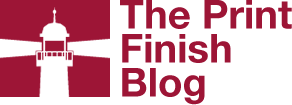Printers who are determined to meet customers’ expectations and improve profitability are taking a close look at the advantages of acquiring new capabilities in print finishing and binding.
Adding bindery equipment to a printing operation creates new opportunities for adding value, competing on price and offering quick, on-demand service. That’s a formula for retaining customers, building sales and increasing profitability.
A printer with a complete bindery capability is able to offer the customer both a more expensive, value-added bindery option and a more economical alternative. As a result, the customer is more likely to find in just one vendor what’s most important for winning the business. In addition, owning your own bindery equipment enables better cost control, larger profit margins and shorter turnaround times. That can also enable you to bid on more jobs of various sizes and with a variety of requirements.
Some printers are interested in niche markets, such as photo books, where the print quality must be very high. When those niche players can also offer customized, very high quality print finishing, covers and binding, they’re in a better position to win new business.
A lot of printers today have added or are adding digital printing to their traditional offset capabilities. That’s a smart way to build business, but it does require the printer to plan his finishing and binding operations to deal with the different physical characteristics of digital output from offset products. Digitally printed products have more color, heavier ink or toner coverage, more coated stocks and collated sets as compared to offset output. That means the digital products require finishing and bindery equipment that won’t misfeed coated stock, won’t crack inks and toner, and will maintain the integrity of sets, among other considerations. If you’re adding finishing and bindery equipment in-line with your digital press, those issues shouldn’t become problems. But if you’re opting for a hybrid workfolow where digital and offset printing output is going to the same bindery equipment, you’ll probably want the advice of the bindery manufacturer.
Printers who already have their print finishing and binding in-house may need to take a look at the manual labor required by their older machinery. When manual labor is relatively inexpensive, your current set-up might still make sense. But modern bindery equipment is much more automated and thus less labor intensive. As labor rates rise, you may want to upgrade to new bindery equipment that requires fewer people and less skill to operate.
Another reason for automating would be to eliminate any bottleneck that manual labor is creating in the production process. Smoothing out the bottlenecks potentially would improve both profitability and turnaround time, which would contribute to customer satisfaction.
For more information about acquiring print finishing and binding capabilities, see Karen Lowery Hall’s article on Quick Printing Magazine’s Website.
